
Oyunohara Otorii
Japan's largest torii gate, a colossal symbol of faith amidst serene former shrine grounds, stunning in spring and autumn.
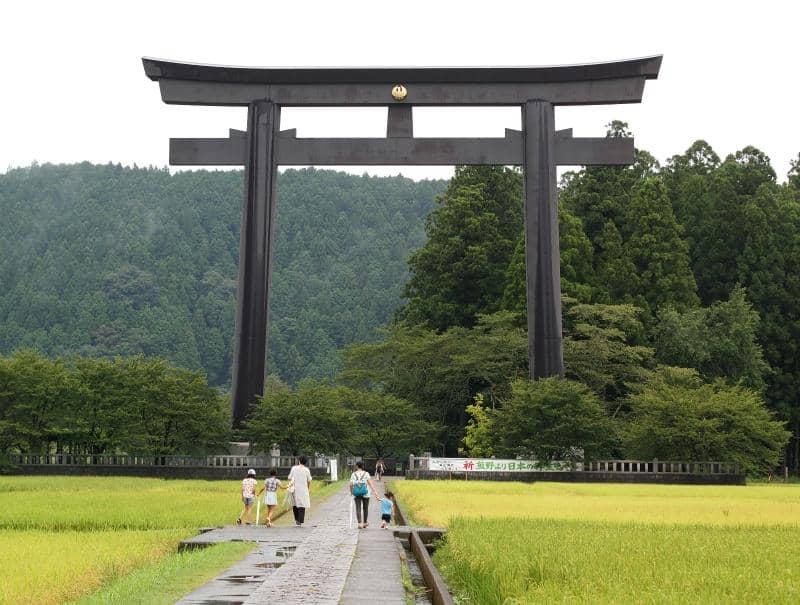
Highlights
Must-see attractions

Social
From TikTok & Reddit
Best Time
Cherry blossoms in bloom

Oyunohara Otorii
Best Time
Cherry blossoms in bloom

Highlights
Must-see attractions
Japan's largest torii gate, a colossal symbol of faith amidst serene former shrine grounds, stunning in spring and autumn.
"The tallest torii in Japan, it stands in defiance in the middle of the flood plain, silently reminding us of it's past glory."
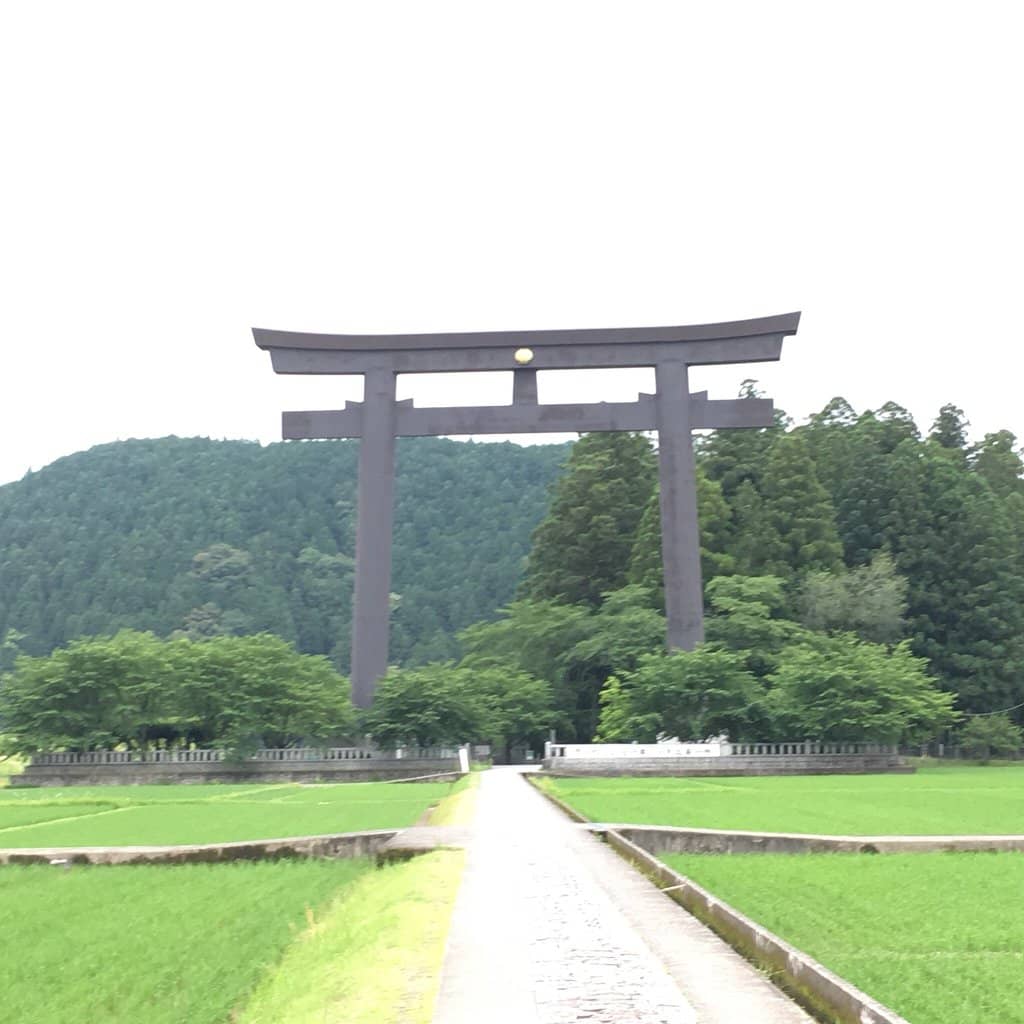
📸 Capture the Scale
The Otorii is massive! Use wide-angle shots and include people for perspective.
🚶♀️ Explore the Grounds
Wander through the former shrine site; it's peaceful and spiritual, especially with the surrounding trees.

Highlights
Discover the most iconic attractions and experiences
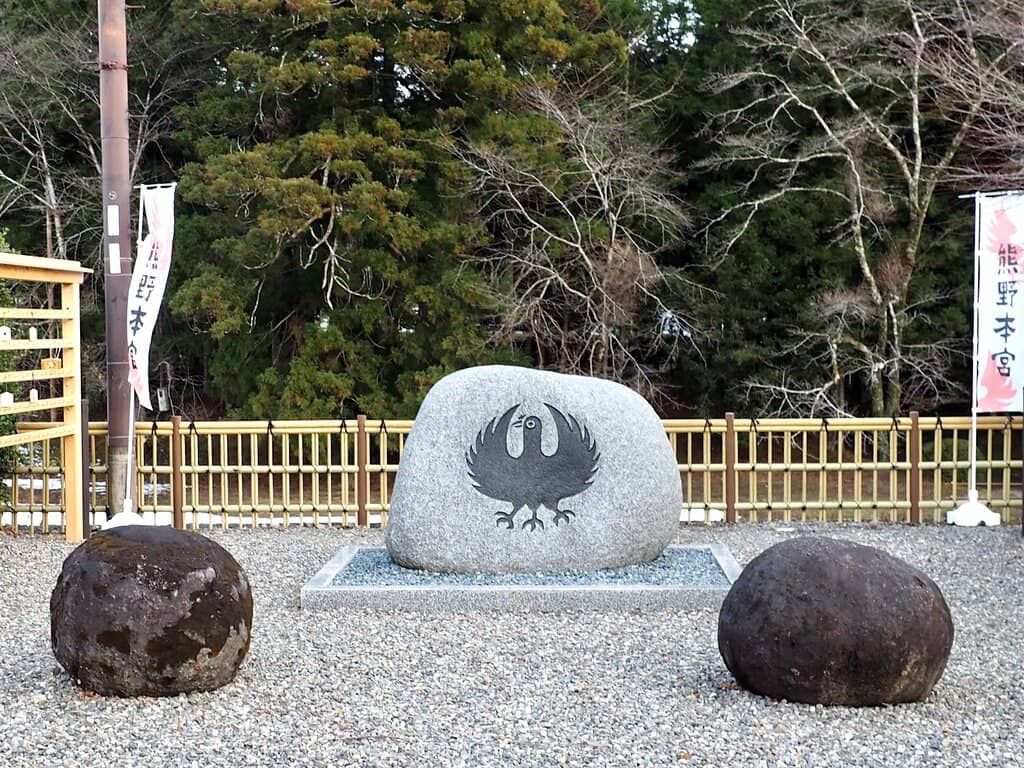
Oyunohara Otorii
Oyunohara
Japan's largest torii gate, a colossal structure standing 33.9 meters tall, marking the former sacred entrance.

Former Kumano Hongu Taisha Site
Oyunohara
The original grounds of the Great Shrine, now a peaceful area with a small forest, offering a spiritual and historical experience.
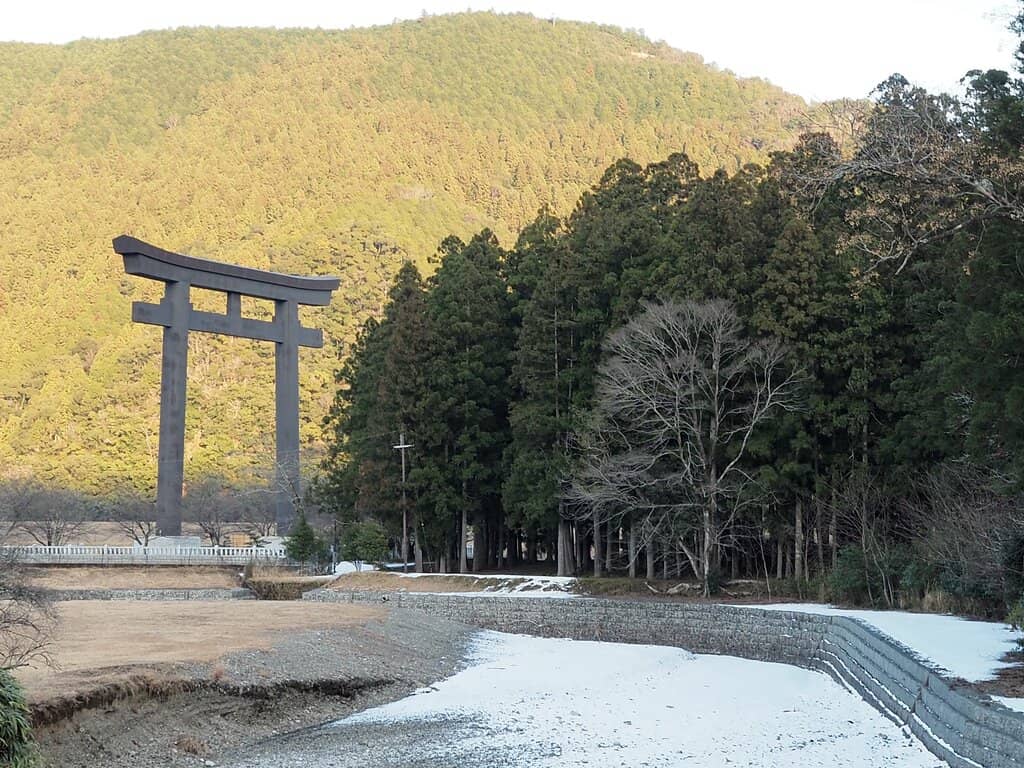
Seasonal Scenery
Oyunohara
Breathtaking views with vibrant cherry blossoms in spring and fiery autumn leaves, creating a picturesque landscape.
Plans like a pro.
Thinks like you
Planning Your Visit
Timing Your Visit to Oyunohara Otorii
Getting to the Giant Torii
Best Times
Insider Tips
from TikTok, Instagram & Reddit
📸 Capture the Scale
The Otorii is massive! Use wide-angle shots and include people for perspective.
🚶♀️ Explore the Grounds
Wander through the former shrine site; it's peaceful and spiritual, especially with the surrounding trees.
⏰ Respect Shrine Hours
The nearby shrine closes at 5 PM. Plan your visit to see both the Otorii and the shrine.
🚗 Consider Tours
Bus services can be infrequent. Organized tours offer convenient transport and guided insights.
Tips
from all over the internet
📸 Capture the Scale
The Otorii is massive! Use wide-angle shots and include people for perspective.
🚶♀️ Explore the Grounds
Wander through the former shrine site; it's peaceful and spiritual, especially with the surrounding trees.
⏰ Respect Shrine Hours
The nearby shrine closes at 5 PM. Plan your visit to see both the Otorii and the shrine.
🚗 Consider Tours
Bus services can be infrequent. Organized tours offer convenient transport and guided insights.
👟 Comfortable Shoes
You'll be doing a lot of walking, especially if exploring the former shrine grounds.
What Travellers Say
Reviews Summary
Visitors are consistently awed by the immense scale and spiritual atmosphere of the Oyunohara Otorii, often describing it as a 'wonderful structure' and a 'calm and sacred' place. The surrounding natural beauty, especially during spring and autumn, is frequently praised. Some note the limited evening services and the shrine's early closing time.
"Oyunohara Sanctuary sits just beyond the huge Otorii gate, surrounded by towering trees that give it a calm and sacred feel."
Ced Aquino
"The tallest torii in Japan, it stands in defiance in the middle of the flood plain (don't let the rice paddies fool you), silently reminding us of it's past glory and long history. While it is a modern production, the nearly indestructible torii nonetheless signifies people's undying faith. The shrine itself has been relocated to nearby hill side, and the old ground of the shrine has only a few Stony pieces to evidence it's prior life, leaving this massive torii the most stunning sight from miles away.
A birds eyes view (too bad no drone allowed here or anywhere) must be awesome."
Jerome Mo
"We hiked to get here and you could see the edge of this torii all the way across town as soon as you step out from the trees because it is SO big. Its open 24 hours but during the night there was no lighting at all, and if you plan on seeing the shrine nearby it closes at 5. There is a stamp here and one at the shrine too. Busses get more rare in the evening and there are less places to eat at night."
Louise Tollisen
What People Like
What People Dislike
Frequently Asked Questions
🚇 🗺️ Getting There
The Oyunohara Otorii is accessible by bus from Kii-Tanabe Station, though services can be infrequent. Many visitors opt for organized tours or private transport for convenience.
Yes, it's possible to hike to the Otorii, and you can often see its edge from a distance as you approach.
Buses are available, but check schedules carefully as they become less frequent in the evening.
While driving is an option, parking availability and specific access points should be confirmed locally.
Some tour operators offer shuttle services as part of their packages, which can be a convenient way to visit.
🎫 🎫 Tickets & Entry
The Oyunohara Otorii itself is an open-air landmark and does not require an entrance ticket.
The Otorii is accessible 24 hours a day, but there is no lighting at night, making daytime visits recommended.
The nearby Kumano Hongu Taisha shrine typically closes at 5 PM, so plan your visit accordingly if you wish to see both.
The former shrine grounds are generally accessible without an admission fee, allowing for exploration of the historical site.
Yes, there is a stamp available at the Otorii, and another one at the nearby shrine.
📸 📸 Photography
To capture the immense scale of the Otorii, use a wide-angle lens and include people or natural elements for comparison.
Drones are generally not allowed for photography at Oyunohara Otorii or other sacred sites in the area.
Golden hour light can be beautiful, but the vibrant colors of spring cherry blossoms and autumn leaves offer stunning photographic opportunities.
While the Otorii is accessible 24/7, there is no lighting at night, making photography challenging and potentially unsafe.
The area around the Otorii and the former shrine grounds offer various perspectives. Experiment with different angles to capture its grandeur.
🎫 🌳 Nature & Scenery
The Otorii is surrounded by towering trees and is located in a flood plain with rice paddies, offering a serene and picturesque setting.
Spring brings beautiful cherry blossoms, while autumn offers vibrant red and yellow foliage, making both seasons ideal for nature lovers.
The Otonashi River flows nearby, and its water reflection can be beautiful, especially with the surrounding scenery.
Historically, the area was prone to flooding, which is why the shrine was relocated. The Otorii stands as a reminder of this past.
You can expect to see a variety of trees, including maples and ginkgo trees, which contribute to the stunning seasonal colors.
For Different Travelers
Tailored advice for your travel style
👨👩👧 Families with Kids
🚶♀️ Solo Travelers & Hikers
📸 Photographers
Deep Dives
In-depth insights and expert knowledge
The Significance of the Otorii
The current Otorii is a modern reconstruction, erected after the original shrine complex was devastated by a flood in 1889. Despite being a newer construction, its robust build signifies the undying faith of the people and their determination to preserve their spiritual heritage. The gate stands proudly in the middle of what was once the shrine's main precinct, now a peaceful area with rice paddies and surrounding trees, offering a stark and beautiful contrast between human endeavor and nature's power.
Visiting the Otorii offers a unique opportunity to connect with Japan's rich religious and historical tapestry. It's a place where the past is palpable, and the enduring spirit of devotion is evident in the monumental scale of the gate. The surrounding landscape, particularly during spring and autumn, adds another layer of beauty, making it a truly memorable destination for reflection and appreciation.
Exploring the Former Shrine Grounds
This area is particularly enchanting during the spring and autumn seasons. In spring, the grounds are adorned with delicate cherry blossoms, while autumn transforms the landscape into a vibrant tapestry of red and yellow leaves. The combination of the historical significance of the site and the natural beauty creates a deeply moving experience. It’s a place where one can imagine the grandeur of the past while appreciating the quietude of the present.
Many visitors find the former shrine grounds to be a spectacular and spiritual experience. It’s a perfect spot for quiet contemplation, photography, or simply enjoying a peaceful walk. The contrast between the massive Otorii and the intimate, natural setting of the former shrine grounds provides a well-rounded understanding of the site's historical and spiritual importance.


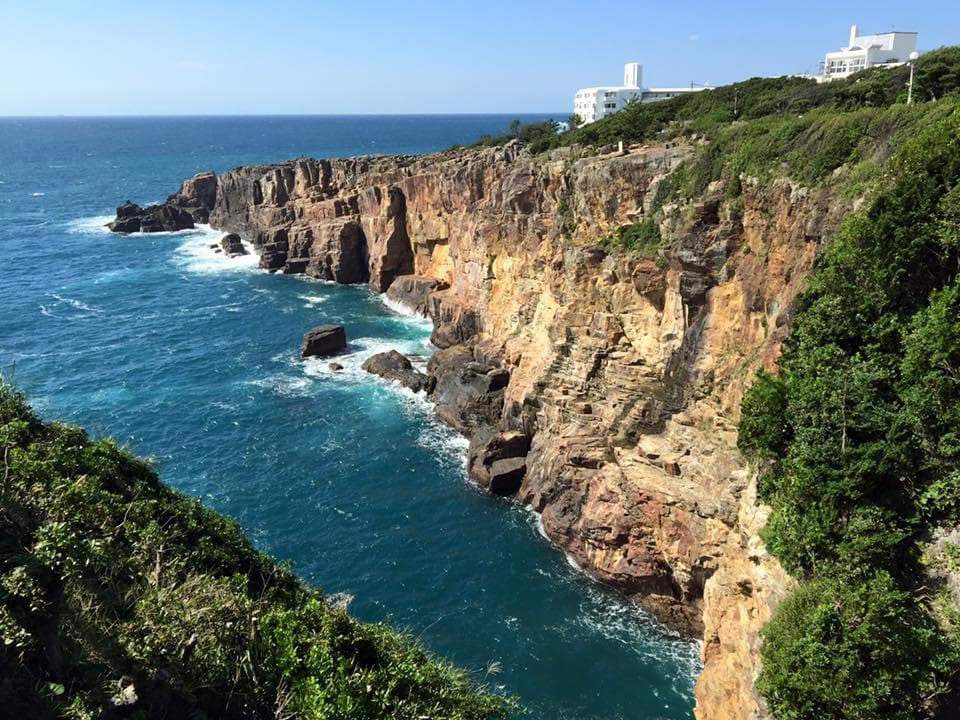
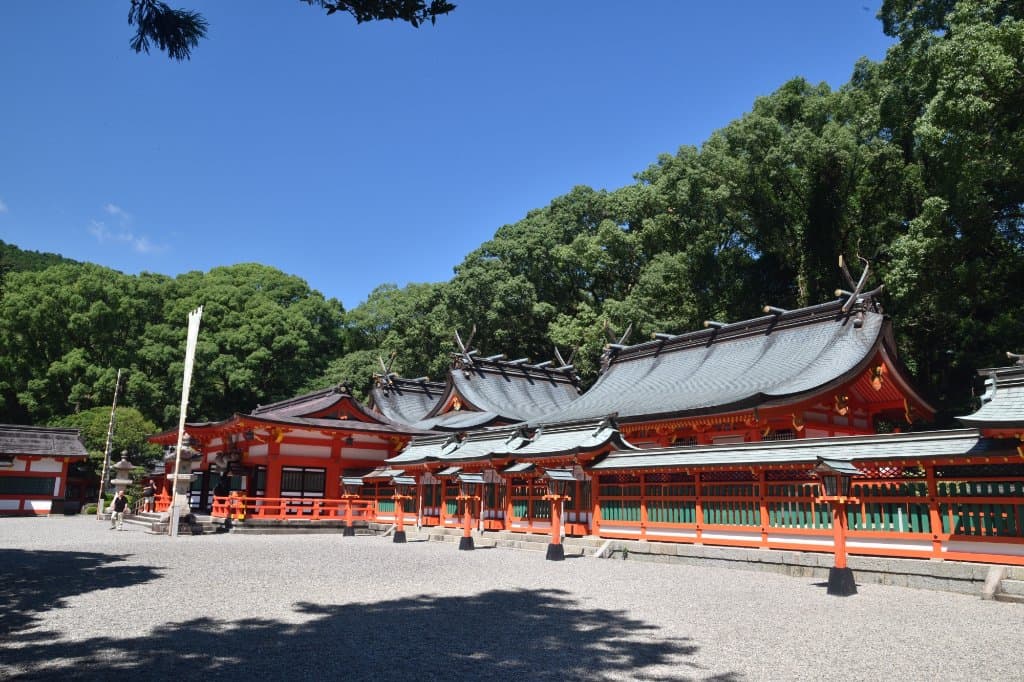
Social
from TikTok, Instagram & Reddit